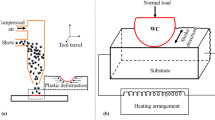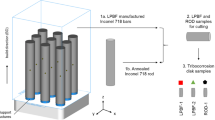Abstract
The reliability of chip scale package (CSP) components against mechanical shocks has been studied by employing statistical, fractographic, and microstructural research methods. The components having high tin (Sn0.2Ag0.4Cu) solder bumps were reflow soldered with the Sn3.8Ag0.7Cu (wt.%) solder paste on Ni(P)|Au- and organic solderability preservative (OSP)-coated multilayer printed wiring boards (PWBs), and the assemblies were subjected to the standard drop test procedure. The statistically significant difference in the reliability performance was observed: the components soldered on Cu|OSP were more reliable than those soldered on Ni(P)|Au. Solder interconnections on the Cu|OSP boards failed at the component side, where cracks propagated through the (Cu,Ni)6Sn5 reaction layer, whereas interconnections on the Ni(P)|Au boards failed at the PWB side exhibiting the brittle fracture known also as “black pad.” In the first failure mode, which is not normally observed in thermally cycled assemblies, cracks propagate along the intermetallic layers due to the strong strain-rate hardening of the solder interconnections in drop tests. Owing to strain-rate hardening, the stresses in the solder interconnections increase very rapidly in the corner regions of the interconnections above the fracture strength of the ternary (Cu,Ni)6Sn5 phase leading to intermetallic fracture. In addition, because of strain-rate hardening, the recrystallization of the as-soldered microstructure is hindered, and therefore the network of grain boundaries is not available in the bulk solder for cracks to propagate, as occurs during thermal cycling. In the black pad failure mode, cracks nucleate and propagate in the porous NiSnP layer between the columnar two-phase (Ni3P+Sn) layer and the (Cu,Ni)6Sn5 intermetallic layer. The fact that the Ni(P)|Au interconnections fail at the PWB side, even though higher stresses are generated on the component side, underlines the brittle nature of the reaction layer.
Similar content being viewed by others
References
V. Puligandla, S. Dunford, and J.K. Kivilahti, Reliability Aspects of Lead-Free Solders in Electronic Assemblies, the Handbook of Lead (Pb)-Free Technology for Microelectronics Assemblies, ed. Karl J. Puttliz and Kathleen A. Stalter (New York: Marcel Dekker Inc., 2004), pp. 769–850.
Directive 2002/96/EC of European Parliament and the Council on Waste of Electrical and Electronic Equipment (WEEE), 27.1.2003.
Directive 2002/96/EC of the European Parliament and the Council on the Restriction of the Use of Certain Hazardous Substances in Electrical and Electronic Equipment/RoHS), 27.1.2003.
T.T. Mattila, P. Marjamäki, and J.K. Kivilahti, Reliability of CSP Interconnections Under Mechanical Shock Loading Conditions, (submitted 2005).
K. Mishiro, S. Ishikawa, M. Abe, T. Kumai, Y. Higashiguchi, and K. Tsebone, Microelectron. Reliability 42, 77 (2002).
K. Kujala and M. Kulojärvi, Package Miniaturization Options and Challenges for Baseband IC’s. The Proceeding of IMAPS Nordic Annual Conference, (Espoo, Finland, IMAPS, September 21–24, 2003).
T.Y. Tee, H.S. Ng, C.T. Lim, E. Pek, and Z. Zhong, Board Level Drop Test and Simulation of TFBGA Packages for Telecommunication Applications. The Proceedings of the 53rd Electronic Components and Technology Conference (Piscataway, NJ: IEEE, 2003), pp. 121–129.
K. Zeng, V. Vuorinen, and J.K. Kivilahti, The Proc. of the 51st IEEE Electronic Components and Technology Conference. (Piscataway, NJ: IEEE, 2001), pp. 693–698.
V. Vuorinen, T. Laurila, Y. Hao, T.T. Mattila, and J.K. Kivilahti, Phase Formation between Lead-Free SnAgCu Solder and Ni(P)/Au Finishes (submitted 2005).
Y.D. Jeon, S. Nieland, A. Ostmann, H. Reichl, and K.W. Paik, J. Electron. Mater. 32, 548 (2003).
J. Haimovich, Welding J. 68, 102s (1989).
C.E. Ho, S.Y. Tsai, and C.R. Kao, IEEE Trans. Adv. Packaging 24, 493 (2001).
P. Su, T. Korhonen, M. Korhonen, and C.Y. Li, Intermetallic Phase Formation and Growth Kinetics at the Interface Between Molten Solder and Ni-Containing Under Bump Metallization. The Proceedings of the Electronic Component and Technology Conference. (Piscataway, NJ: IEEE, 2000), pp. 1712–1718.
H. Matsuki, H. Ibuka, and H. Saka, Sci. Technol. Adv. Mater. 3, 261 (2002).
Z. Mei, M. Kaufmann, A. Eslambolchi, and P. Johnson: Brittle Interfacial Fracture of PBGA Packages Soldered on Electroless Nickel/Immersion Gold. The Proceedings of the Electronic Components and Technology Conference. (Piscataway, NJ: IEEE, May 25–28, 1998), pp. 952–961.
Y.D. Jeon, K.W. Paik, K.S. Bok, W.S. Choi, and C.L. Cho: J. Electron. Mater. 31, 520 (2002).
Y.D. Jeon and K.W. Paik, The Proceeding of the Electronic Components and Technology Conference. (Piscataway, NJ: IEEE, 2001), pp. 1326–1332.
JESD22-B111, Board Level Drop Test Method of Components for Handheld Electronic Products (Arlington, VA: JEDEC Solid State Technology Association, July 2003).
Engineering Statistics Handbook, NIST/SEMATECH e-Handbook of Statistical Methods, http://www.itl.nist.gov/div898/handbook/,20.1.2005.
J.S. Milton and J.C. Arnold, Introduction to Probability and Statistics, 2nd ed. (New York: McGraw-Hill, 1990), pp. 324–326.
T.T. Mattila, V. Vuorinen, and J.K. Kivilahti, J. Mater. Res. 19, 3214 (2004).
T.O. Reinikainen, P. Marjamäki, and J.K. Kivilahti, The Proceedings of the 6th IEEE EuroSim Conference (Piscataway, NJ: IEEE, 2005).
J.K. Kivilahti, (Presentation at IMAPS Nordic Conf., Espoo, Finland, 21–24 September 2003).
K. Ishii, J. Phys. Soc. Jpn. 14, 1315 (1959).
P. Oberndorff (Doctoral Thesis, Eindhoven University of Technology, 2001).
T. Takemoto and T. Yamamoto, J. JCBRA, 40, 309 (2001).
H. Rhee, F. Guo, J.G. Lee, K.C. Chen, and K.N. Subramanian, J. Electron. Mater. 32, 1257 (2003).
L.L. Ye (Doctoral Thesis, Chalmers University of Technology, 2002).
Author information
Authors and Affiliations
Rights and permissions
About this article
Cite this article
Mattila, T.T., Kivilahti, J.K. Failure mechanisms of lead-free chip scale package interconnections under fast mechanical loading. J. Electron. Mater. 34, 969–976 (2005). https://doi.org/10.1007/s11664-005-0084-7
Received:
Accepted:
Issue Date:
DOI: https://doi.org/10.1007/s11664-005-0084-7




